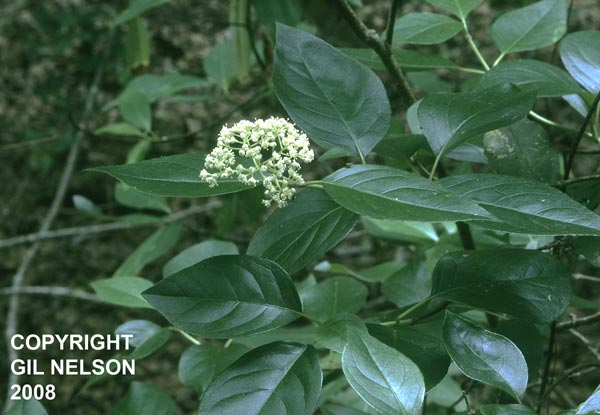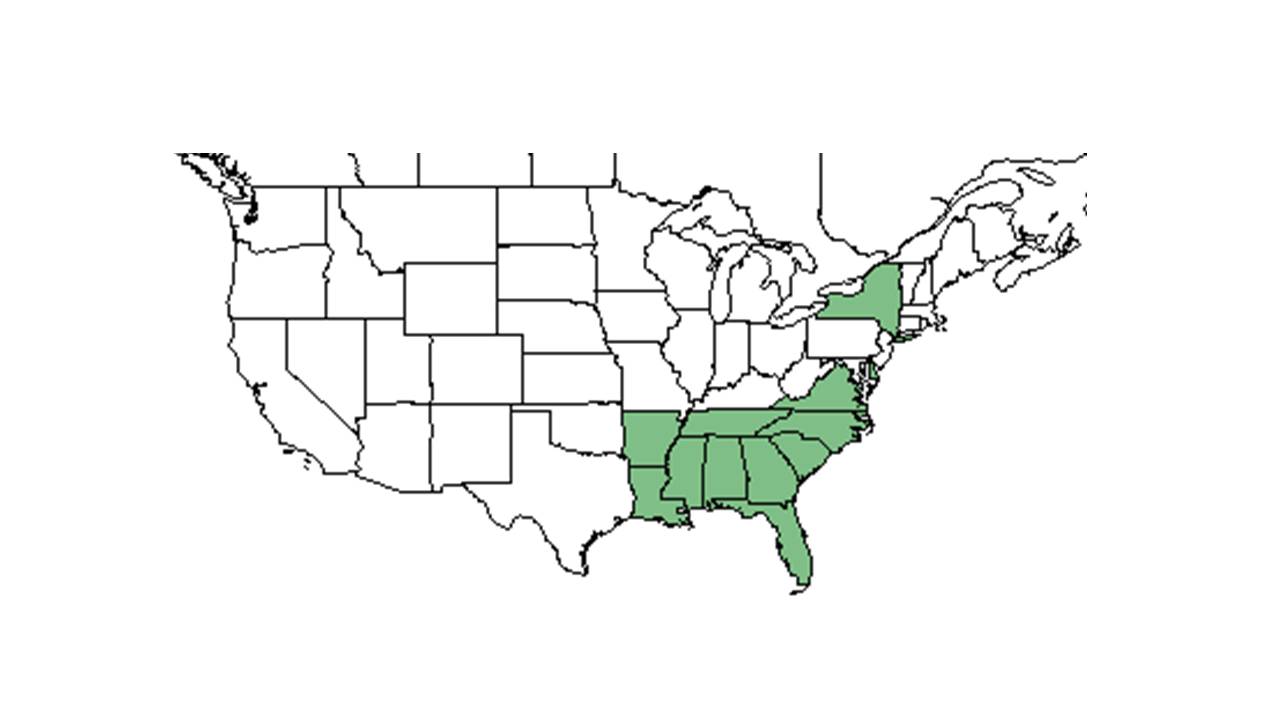Difference between revisions of "Decumaria barbara"
(→Description) |
|||
| Line 24: | Line 24: | ||
It has a vining and climbing habit (FSU Herbarium). | It has a vining and climbing habit (FSU Herbarium). | ||
| + | |||
| + | "High-climbing, woody vine with adventitious, aerial roots. Leaves opposite, ovate, elliptic, or obovate, 3-12 cm long, 1-7 cm wide, glabrous above, pubescent beneath, at least n the veins, acute or acuminate, entire to coarsely serrate, base cuneate to cordate, petiolate. Corymbs terminal, 4-10 cm broad; flowers numerous, perfect, regular, bracteates, short-pedicellate. Calyx tube 7-10 cm ribbed, turbinate, ca. 1.5 mm long in anthesis, 3.5-4 mm long in fruit, lobes 7-10, persistent, 0.2-1 mm long; petals 7-10, white; stamens numerous; carpels 7-10, stigma capitate with 7-10 lobes, style solitary, thick, ca. 1 mm long, ovary inferior, 7-10 locular, many-ovulate, placentation parietal. Capsules turbinate or obovoid, conspicuously longitudinally ribbed, 4-5 mm long; seeds lustrous, yellow, linear-terete, ca. 2 mm long." - Radford et al 1964. | ||
==Distribution== | ==Distribution== | ||
Revision as of 11:52, 21 January 2016
| Decumaria barbara | |
|---|---|

| |
| Photo taken by Gil Nelson | |
| Scientific classification | |
| Kingdom: | Plantae |
| Division: | Magnoliophyta - Flowering plants |
| Class: | Magnoliopsida – Dicotyledons |
| Order: | Rosales |
| Family: | Hydrangeaceae |
| Genus: | Decumaria |
| Species: | D. barbara |
| Binomial name | |
| Decumaria barbara L. | |

| |
| Natural range of Decumaria barbara from USDA NRCS Plants Database. | |
Common name: woodvamp
Contents
Taxonomic notes
Description
It has a vining and climbing habit (FSU Herbarium).
"High-climbing, woody vine with adventitious, aerial roots. Leaves opposite, ovate, elliptic, or obovate, 3-12 cm long, 1-7 cm wide, glabrous above, pubescent beneath, at least n the veins, acute or acuminate, entire to coarsely serrate, base cuneate to cordate, petiolate. Corymbs terminal, 4-10 cm broad; flowers numerous, perfect, regular, bracteates, short-pedicellate. Calyx tube 7-10 cm ribbed, turbinate, ca. 1.5 mm long in anthesis, 3.5-4 mm long in fruit, lobes 7-10, persistent, 0.2-1 mm long; petals 7-10, white; stamens numerous; carpels 7-10, stigma capitate with 7-10 lobes, style solitary, thick, ca. 1 mm long, ovary inferior, 7-10 locular, many-ovulate, placentation parietal. Capsules turbinate or obovoid, conspicuously longitudinally ribbed, 4-5 mm long; seeds lustrous, yellow, linear-terete, ca. 2 mm long." - Radford et al 1964.
Distribution
Ecology
Habitat
It is found in in swampy woods, along banks and streams, in floodplains, in mesic woodlands, slopes of ravines, and seen climbing on a tree trunk(FSU Herbarium). It requires low light levels (FSU Herbarium). It is associated with drying sandy loam soil types (FSU Herbarium).
Associated species includes Acer, Carpinus, Fraxinus, Nyssa, Quercus, Taxodium (FSU Herbarium).
Phenology
It has been observed flowering in April and May and seen fruiting in May (FSU Herbarium).
Seed dispersal
Seed bank and germination
Fire ecology
Pollination
Use by animals
Diseases and parasites
Conservation and Management
Cultivation and restoration
Photo Gallery
References and notes
Florida State University Robert K. Godfrey Herbarium database. URL: http://herbarium.bio.fsu.edu. Last accessed: June 2014. Collectors: Loran C. Anderson, Rodie White, Robert K. Godfrey, Travis MacClendon, Karen MacClendon, and Kathy Willis. States and Counties: Florida: Calhoun, Gadsden, Jackson, Liberty, and Wakulla. Georgia: Grady.